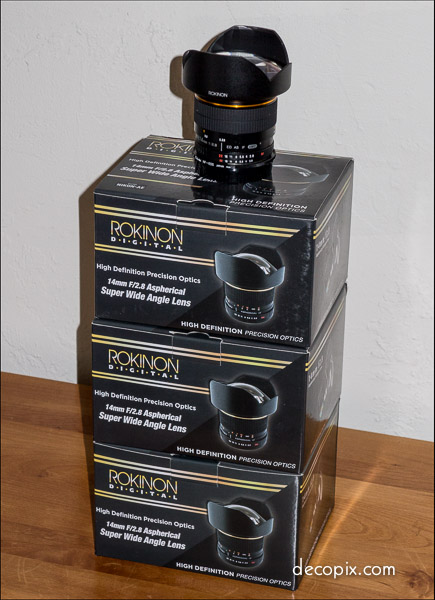In the days when photo magazines were the primary source of camera and lens tests, the magazines would ask the manufacturer or distributor for a sample. At least that’s how it was done at the companies I worked for.
With long lead times for monthly print publications, it was neccessary to get your hands on the hot products ASAP. The fastest way was to go straight to the source.
You’d be foolish to think the samples provided weren’t thoroughly checked prior to being sent for testing. Even so, occasionally a product tested poorly. Staff at the publication would assume this was an anomaly. They’d request a second sample (or another “copy” as it is now known for some strange reason.) The second sample would usually rectify the problem or if it didn’t, the magazine would most likely refrain from testing the product.
This was all pretty innocent, I think. But you could argue that the lens you read about in a magazine test wasn’t necessarily the same as the one you were buying. Savvy photographers did their own tests. Not on an optical bench, but under the real world conditions the lens would be used for.
Have things changed, now that we get our information online? Not really. These days, big sites like Digital Photography Review have added a sort of cautionary buffer, referring to early samples as “pre-production.” I think pre-production translates roughly to prototype. Assuming this is correct, it means the item you ultimately buy will be one of three things: better than the pre-production version, worse, or the same.
Or different. I don’t want to belabor this, but it’s interesting that a site that does not publish rumors will publicize a sample product that may differ from what is ultimately available to customers.
Getting back to products that have been produced, as far as I know, LensRentals is the only place that tests large numbers of “identical” lenses and wouldn’t you know, they’re not identical.
Which brings us to my tale of three [easyazon_link cloaking=”default” keywords=”rokinon 14mm” localization=”default” locale=”US” nofollow=”default” new_window=”default” tag=”decopix-20″]rokinon 14mm[/easyazon_link]. The beauty of having more than one lens to examine is that even if your test setup is less than state of the art, a comparison of identical items should still produce identical results. Unless the items aren’t identical.
I grant you this is a very complex lens at a very low price. But does that mean you don’t mind getting a bad one? Didn’t think so.
I’ll summarize (remember, the goal here is not an absolute number; we just want to know if one lens is better than another.)
Lens #1 was staggeringly sharp…in three corners. The three corners were so good, I laughed out loud, but the fourth corner was mush. Ordered a replacement but kept the original.
Lens #2 was mediocre. Not bad really, but none of the corners came close to Lens #1. Kept both lenses; ordered a third.
Lens #3 was very sharp in three corners and exceptionally sharp in the fourth. Bingo. Four corners I could live with.
Of course I would have loved to have a [easyazon_link cloaking=”default” keywords=”Rokinon 14mm” localization=”default” locale=”US” nofollow=”default” new_window=”default” tag=”decopix-20″]Rokinon 14mm[/easyazon_link] with four equally spectacular corners. And I know it’s theoretically possible. But with three lenses sitting here, I didn’t want to wear out my welcome with Amazon’s return policy.
The lesson? When one guy says a lens sucks and and another guy says it’s the sharpest he’s ever used, they’re probably both right. Trust, but verify.
[easyazon_block add_to_cart=”default” align=”left” asin=”B004NNUN02″ cloaking=”default” layout=”top” localization=”default” locale=”US” nofollow=”default” new_window=”default” tag=”decopix-20″]
[easyazon_block add_to_cart=”default” align=”left” asin=”B003VSGQPG” cloaking=”default” layout=”top” localization=”default” locale=”US” nofollow=”default” new_window=”default” tag=”decopix-20″]
